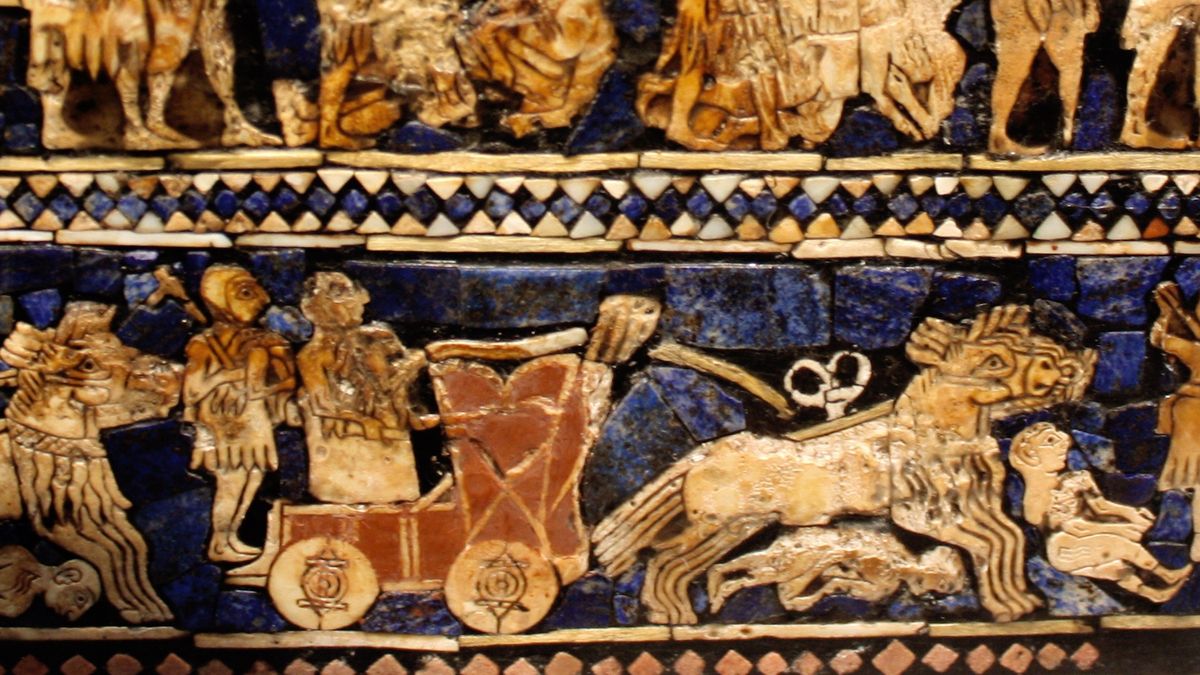Even though the invention of the wheel around 6,000 years ago revolutionized everything from transportation to pottery making, its exact origins are still a mystery to archaeologists. But a new study using techniques from structural mechanics suggests that Eastern European copper miners may have been the driving force behind three major innovations in wheel technology as early as 3900 B.C.
Archaeological evidence of wheels and wheeled vehicles abounds in the Copper Age (around 5000 to 3000 B.C.) across Europe, Asia and Northern Africa, including battle scenes painted on walls, miniature wheels, children’s toys, wagon burials and even early textual references to the technology. Because the wheel was adopted so quickly, though, it is unclear exactly where and when it was first invented — or if it was invented independently in different times and places.
There are three main theories for the wheel’s origin. One suggests that it first appeared in Mesopotamia around 4000 B.C. and then spread to Europe. Another theory suggests it was developed around the Pontic coast of northern Turkey around 3800 B.C. The third major theory argues that the wheel was invented in the Carpathian Mountains between 4000 and 3500 B.C., and spread in various directions from there.
This third theory, put forward in 2016 by historian Richard Bulliet, a professor emeritus at Columbia University and a co-author of the new study, rests on the idea that, around 4000 B.C., much-sought-after copper ore had become harder to find, requiring miners to travel deep into mines and lug containers of ore back out. Late Copper Age wagon models that have been found in the Carpathian region are rectangular with trapezoidal sides — similar to mining cars today, Bulliet wrote in the book “The Wheel: Inventions and Reinventions” (Columbia University Press, 2016).
In a study published Wednesday (Oct. 23) in the journal Royal Society Open Science, Bulliet and co-authors Kai James, an aerospace engineer at Georgia Tech, and Lee Alacoque, an engineer previously at the the University of Illinois Urbana-Champaign, detailed their model of how the wheel likely evolved.
Related: 20 inventions that changed the world
Beginning with their knowledge of ancient wheel systems based on archaeological evidence, the team employed computational mechanics and design science to investigate how people may have turned a set of simple rollers into a wheel-and-axle system.
In their study, the researchers suggested that three innovations were needed for the wheel to evolve. Given the need to move a heavy basket or box, people likely used rollers placed along a path, moving the back rollers to the front as needed.

The first innovation — grooved rollers — would have allowed the box to rest on the rollers and move back and forth, without people having to walk around it to replace the rollers. This may have allowed people to push a wider cart into the mine. The second innovation was a wheelset, or wheels fixed to an axle, which could have given the cart a higher clearance to pass over rocks and other debris in a mineshaft. And the third innovation, where the wheels move independently of the axle, likely arose around 500 years after the wheelset and added maneuverability to the design, according to the paper.
After generating an optimized wheelset design, the team discovered, based on their computational analysis, that the evolution of the wheel and axle from simple rollers was a plausible descent path that reflected an increasingly energy-efficient design. But the Carpathian mines may have influenced the design as well.
“The environment where the original wheel developers were operating contained certain unique features that encouraged a shift toward roller-based transport,” James told Live Science in an email. “Essentially, these environmental features — e.g., a narrow, enclosed path — pushed the wheel’s developers toward that particular design.”
However, the researchers noted that the wheel did not stop evolving in the Copper Age. For example, the invention of radial ball bearings in 1869 led to significant advancements in the automotive and machine industries in the 20th century.
Although the new model may explain how the wheel was invented in Eastern Europe, potentially spreading from there, it may not be the last word on the topic. “I think it’s still possible that multiple civilizations independently discovered the wheel on their own,” James said.
The computational design approach that the researchers took in this study could potentially be applied to other archaeological questions, James said. “For example, I think there is still much to learn about exactly how the pyramids were constructed,” he said. “Computational mechanical design could be instrumental in answering some of those questions.”

